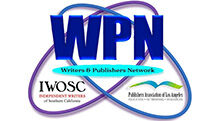 by Bobbie Christmas
by Bobbie Christmas
Q: I’m having a problem with adverbs in short stories. (He said, shyly.) I want to enter some of my stories in contests, but they are usually limited to a specific word length. In longer stories, I try to use adverbs only when I want to make the attributive statement contradictory.
Example: “That was fun,” he said, angrily.
Otherwise, I will write something like this: “I like that.” He had a sarcastic tone in his voice, as if it were a challenge.
In short stories, though, I might be forced to write “I like that,” he said, sarcastically.
Do I go for the brevity and take the chance that I am losing something, or do I temper the prose in a short story with a mixture of adverbs?
What about novels? I read about five books a month and I’ve seen some books heavy in adverbs and others not; however, some of these are not recent publications. Is the current trend toward more adverbs, less, or a blend of both writing styles?
A: Before I answer, I have to address the incorrect commas in the examples. The correct punctuation would be this: “I like that,” he said sarcastically.
Okay, now let’s look at the issue of adverbs. As you figured, contemporary writers shun adverbs and write much tighter than writers of old. Brevity is in; wordiness is out.
How can you get your point across without using adverbs? Every time you have an urge to use an adverb, stop and ponder the verb it was going to modify. Choose a more descriptive or action-filled verb, and the adverb becomes superfluous. Consider this sentence, for example: Tom walked hurriedly to the door. Take out the adverb and choose a more descriptive verb, and the sentence has more punch: Tom raced to the door. Tom hurried to the door. Tom dashed to the door. Look at all your options and pick a strong verb, and the adverb won’t be missed.
The problem is that adverbs tell, rather than show, and skilled writers of today show a story, rather than tell it.
As for adverbs in attributions, also called tags, devise other ways of showing what the speakers mean. I don’t like leaning on the old “in a (whatever) tone,” because it not only tells, but it is also wordy and can grow repetitive. For stronger writing, use the character’s actions—body language—to show (rather than tell) what the character means.
Instead of this: “I like that,” he said sarcastically, the rewrite might go something like this: He rolled his eyes. “Well, I like that.” An alternative might be this: He jammed his fists into his hips. “Imagine how much I like that.”
Q: I have written a short story in which the two characters alternate, i.e. one is listening to the other tell a story, and her comments and thoughts are interspersed. In my original, I indicate the change between characters with a paragraph change and the thoughts of the listener in italics. I read that italics are a no-no in standard formatting for manuscripts being submitted for publication. How can I present my concept without using italics or a change in font?
A: First you are correct that it is necessary to indicate a change in point of view, but a paragraph change is not enough. One character may go on for more than a paragraph, so how can readers tell the difference between a continuance with one character or a shift to another’s point of view? To indicate a point of view change, we must add space between the paragraphs.
Warning: some default formatting adds space between every paragraph, which is correct in documents set flush left with no indents. In standard manuscript formatting, however, each new paragraph is indented five spaces, with no extra space between paragraphs except to indicate a change in scene or point of view. You may have to change the document’s default settings to indicate no space before or after a new paragraph. Once the document is set up correctly, hit the Enter tab twice to indicate a scene shift or a shift in point of view.
Next think seriously about the wisdom of using thoughts at all, because thoughts always tell, rather than show, whereas the best stories show, rather than tell. Consider putting the thoughts into dialogue and resolving the issue that way.
If the thoughts are truly ones the characters must keep to themselves, though, do not distress. While italics are not recommended, they are not a no-no. Because we are able to create italics on our computers, underlines (which used to mean italics on our old typewriters) are the no-no now. Yes, underlines and italics are the same thing, which is why nothing in a fiction manuscript should ever be underlined.
The underline exception applies to nonfiction e-books that list active links to URLs. Underlines indicate active links in online-accessible documents.
For much more information on hundreds of subjects of vital importance to writers, order Purge Your Prose of Problems, a Book Doctor’s Desk Reference Book.
Send your questions to Bobbie@zebraeditor.com. Bobbie Christmas, book editor, owner of Zebra Communications, and author of seven-award-winning Write In Style: How to Use Your Computer to Improve Your Writing, will answer your questions quickly. Read more Ask the Book Doctor questions and answers at www.zebraeditor.com.

Thank you Bobbie. I routinely use italics for thoughts but after reading your article I shall edit once again and see if I can avoid some thoughts. The formatting advice was also most helpful. Appreciate all your efforts and all you do.